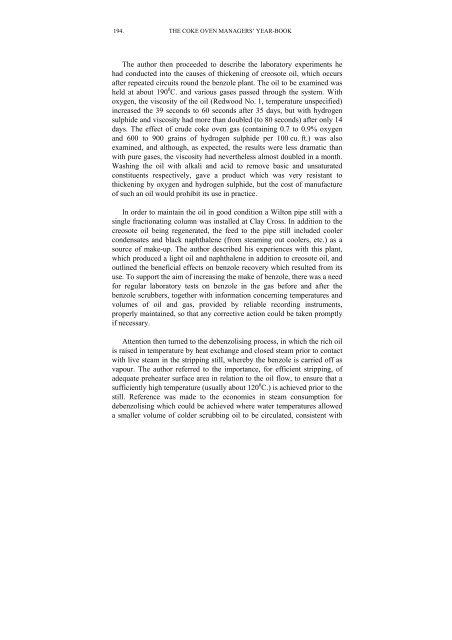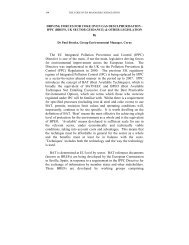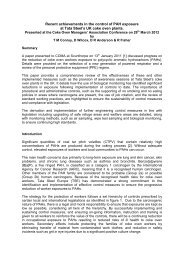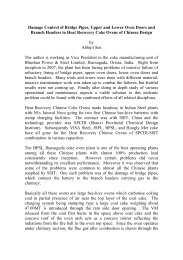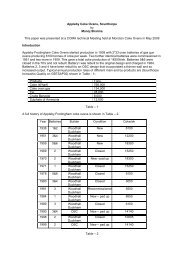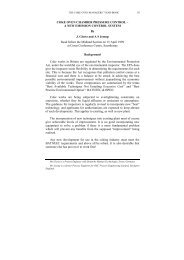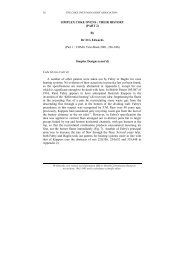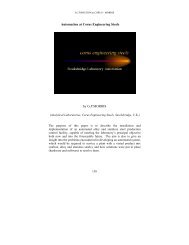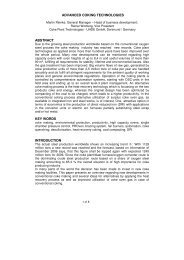CHAIRMAN'S ADDRESS - Coke Oven Managers Association
CHAIRMAN'S ADDRESS - Coke Oven Managers Association
CHAIRMAN'S ADDRESS - Coke Oven Managers Association
- No tags were found...
You also want an ePaper? Increase the reach of your titles
YUMPU automatically turns print PDFs into web optimized ePapers that Google loves.
194. THE COKE OVEN MANAGERS’ YEAR-BOOKThe author then proceeded to describe the laboratory experiments hehad conducted into the causes of thickening of creosote oil, which occursafter repeated circuits round the benzole plant. The oil to be examined washeld at about 190 0 C. and various gases passed through the system. Withoxygen, the viscosity of the oil (Redwood No. 1, temperature unspecified)increased the 39 seconds to 60 seconds after 35 days, but with hydrogensulphide and viscosity had more than doubled (to 80 seconds) after only 14days. The effect of crude coke oven gas (containing 0.7 to 0.9% oxygenand 600 to 900 grains of hydrogen sulphide per 100 cu. ft.) was alsoexamined, and although, as expected, the results were less dramatic thanwith pure gases, the viscosity had nevertheless almost doubled in a month.Washing the oil with alkali and acid to remove basic and unsaturatedconstituents respectively, gave a product which was very resistant tothickening by oxygen and hydrogen sulphide, but the cost of manufactureof such an oil would prohibit its use in practice.In order to maintain the oil in good condition a Wilton pipe still with asingle fractionating column was installed at Clay Cross. In addition to thecreosote oil being regenerated, the feed to the pipe still included coolercondensates and black naphthalene (from steaming out coolers, etc.) as asource of make-up. The author described his experiences with this plant,which produced a light oil and naphthalene in addition to creosote oil, andoutlined the beneficial effects on benzole recovery which resulted from itsuse. To support the aim of increasing the make of benzole, there was a needfor regular laboratory tests on benzole in the gas before and after thebenzole scrubbers, together with information concerning temperatures andvolumes of oil and gas, provided by reliable recording instruments,properly maintained, so that any corrective action could be taken promptlyif necessary.Attention then turned to the debenzolising process, in which the rich oilis raised in temperature by heat exchange and closed steam prior to contactwith live steam in the stripping still, whereby the benzole is carried off asvapour. The author referred to the importance, for efficient stripping, ofadequate preheater surface area in relation to the oil flow, to ensure that asufficiently high temperature (usually about 120 0 C.) is achieved prior to thestill. Reference was made to the economies in steam consumption fordebenzolising which could be achieved where water temperatures alloweda smaller volume of colder scrubbing oil to be circulated, consistent with


